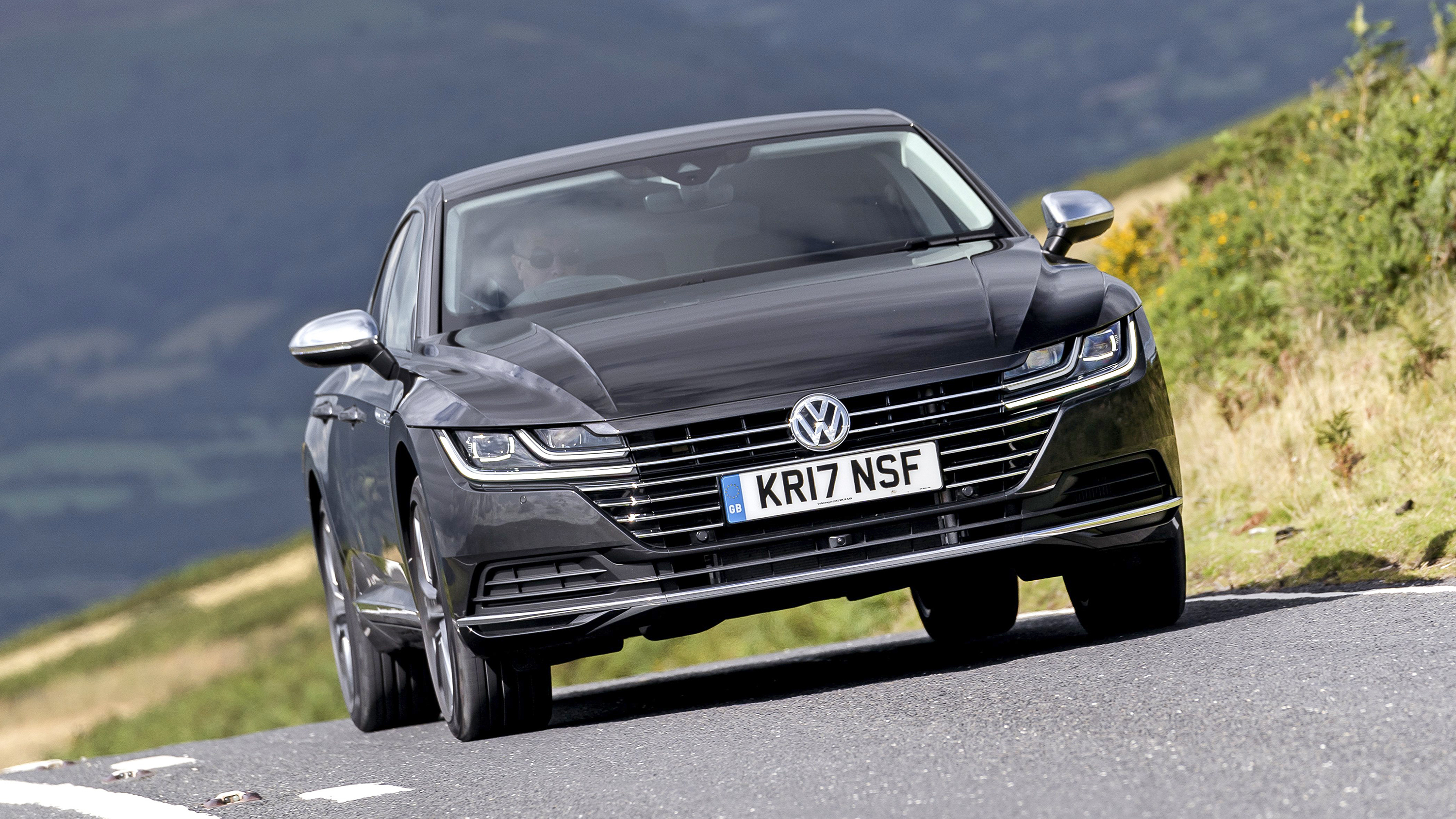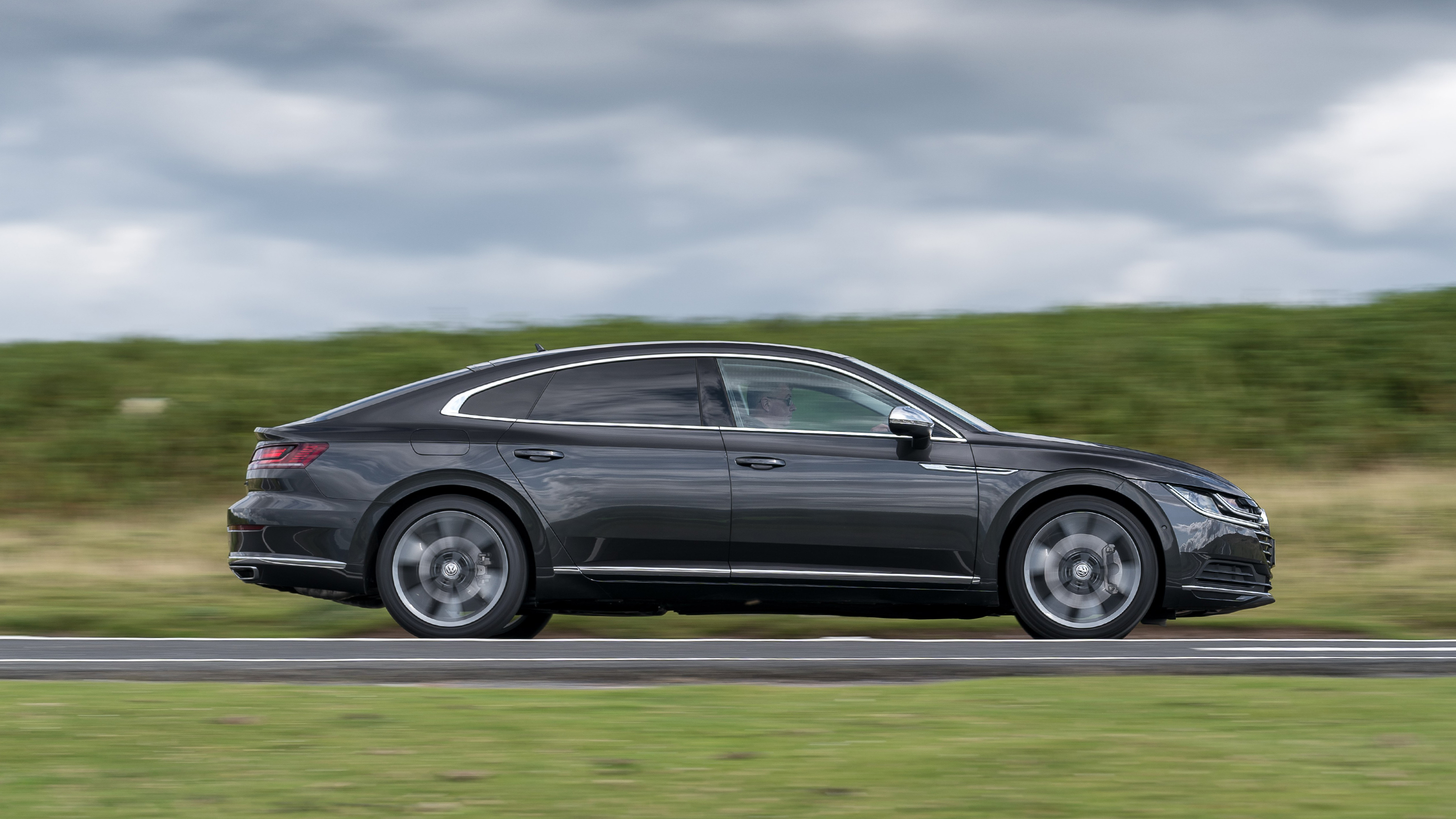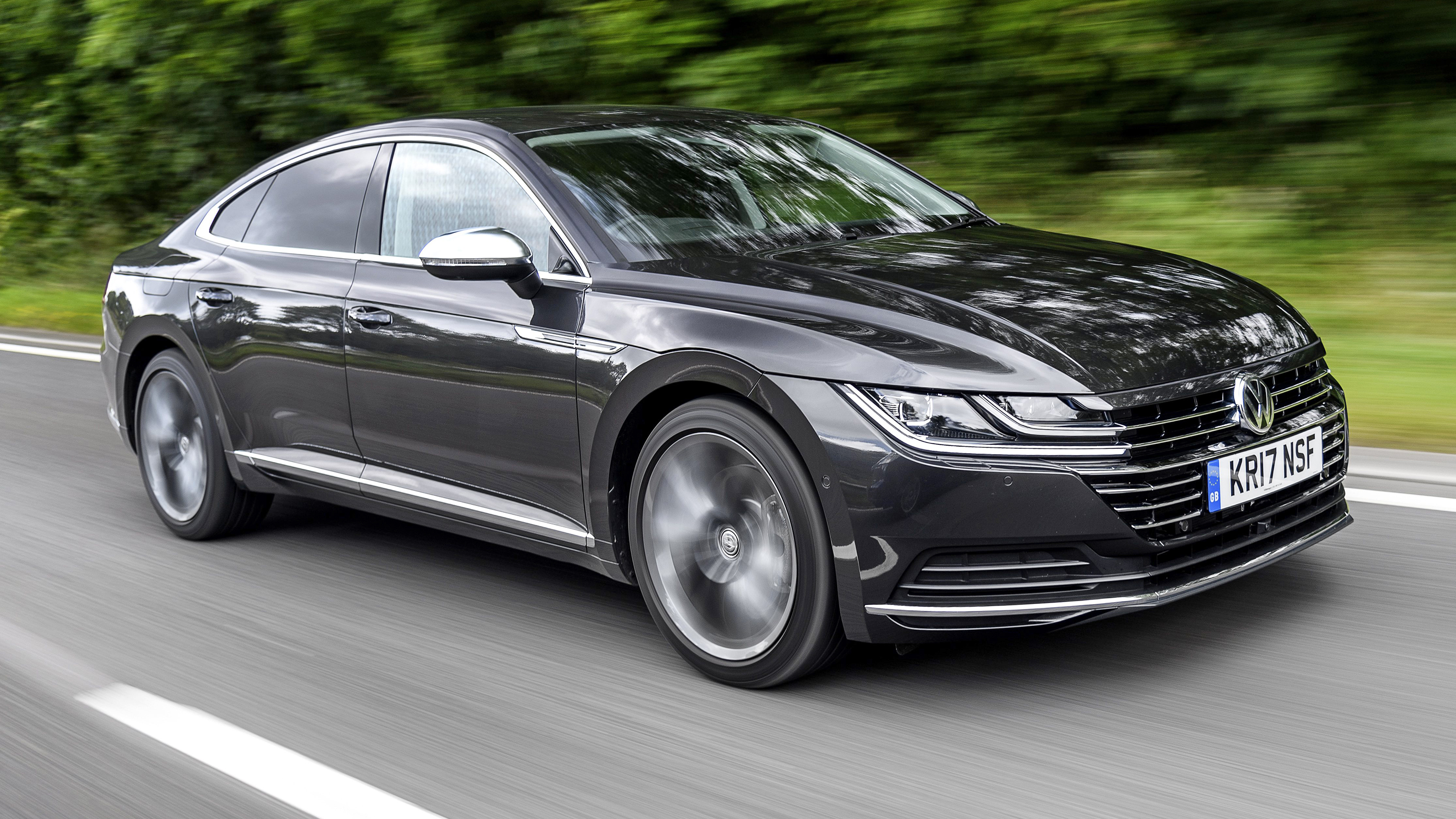
SPEC HIGHLIGHTS
- BHP
150bhp
- 0-62
9s
- CO2
119g/km
- Max Speed
138Mph
The VW Arteon's been around a few months. What's different about this one?
Good point. The early Arteons we drove had lots of power, DSG, 4Motion and adaptive dampers. They were, frankly, a little optimistically specced for the fleet-car/cabbing trade. Or indeed for sensible family transport for normal unpretentious people.
This one's different (well, the one we’ve driven; VW’s pictures are of something fancier). It's front-wheel drive, manual, and pulled along by an economically-tuned petrol. To whit, VW's 1.5-litre Evo, the one with cylinder shut-off in light-throttle moments.
That small an engine in that big a car? Someone's taking the mick…
For sure, the history of, say, the 1.0-litre Mondeo wasn't a good omen. It promised good economy and failed to deliver.
But I managed to get an approximation of diesel economy out of this petrol Arteon. I didn't notice the cylinder shut-off light coming on much of the time, but I must have been watching the road or something. And at 9.0 seconds to 62mph, it's not tragically slow.
You must've driven like a carbon-saint.
Actually, as fast as conditions allowed. Normal traffic, normal time of day. Britain's urban and trunk network hardly lends itself to blatting about with the tyres on fire. This Arteon is about being satisfying in real life. OK, with just 150bhp, it's tricky to overtake on a single-carriageway. Then, IRL no-one seems to do that anymore.
Is it a pleasant engine to use?
Not too dreary. Quiet most of the time, a little busy towards the red-line, but never grim. The manual gearlever is on the clonky side, but clutch and throttle calibrations make it easy to drive smoothly even in stop-go traffic.
Top Gear
Newsletter
Thank you for subscribing to our newsletter. Look out for your regular round-up of news, reviews and offers in your inbox.
Get all the latest news, reviews and exclusives, direct to your inbox.
I'm getting the message this is no sports car. Is it a limo?
Hmmm, not quite. There's a surprising turbulence and diagonal rocking to the ride. OK, on most roads it stops short of being actually annoying, but it's a gentle reminder that we might have reached the upper limit of what's achievable with the ubiquitous MQB chassis. Though the higher-spec Arteons have adaptive damping and partially swerve the issue.
The steering is a bit dead, but the measly power doesn't stress the front tyres, so cornering is always benign. It'd have to be really slippery underfoot before you miss the 4Motion four-wheel-drive system.
What’s a lower spec Arteon like inside?
Cabin feelgood levels are pretty high. Nice VW trim quality, leather seats, lots of back-seat room and a socking great 563-litre boot under a handy hatchback.
Kit count is conspicuously generous: electric driver's seat, independent rear air con, connected navigation, TFT driver's display (though we always end up setting it to two big fake dials, so why not just have two big real dials?). The navigation screen is big, tactile and connected, and it does phone mirroring too.
Driver assist levels are significant, including radar cruise with a function that uses sat nav data to coast your speed downwards on the approach to roundabouts. The headlights are LED and the cornering lights also use sat nav data, this time to predictively swing the beam through roundabouts and bends.
In summary?
It's got a lot of tinsel, but underneath it all, it’s not actually the most sophisticated big car. But bigness and tinsel are attractive qualities and you do have to scratch quite hard before the uncultivated base begins to show. And at £31k you might still be inclined to forgive.
Here's a VW you can buy on value. When the high-spec early cars grazed £40k we said it was playing out of its league, but in this new £30k context it makes sense.
7/10
Featured

Trending this week
- Car Review
BMW 1 Series






